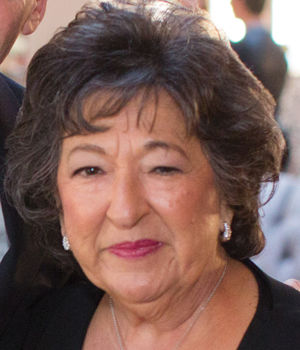Exploring artists’ creative use of text in the visual arts
Published January 5, 2018
When viewing St. Louisans Alison and John Ferring’s fabulous contemporary art collection, I noticed that many of the works contained text. There were works by Suzanne McClelland, Kara Walker, Jenny Holzer and many other well-known artists who frequently incorporate text in their art.
I asked Alison Ferring to comment on text in art. She said, “Now more than ever we are barraged with text in our lives. Spam, email, texting, sexting, tweeting. Words are ricocheting at dizzying speed. Books are fast becoming nostalgic reminders of a bygone materiality. Yet text does determine materiality. It seems more and more contemporary artists are using text and books as a type of anchor of materiality.”
The cubists were the first to use text in modern art, but the text was used mostly as mere decoration. German artist Kurt Schwitters saw text as material to shape, nurture and blossom. He influenced sound exploration, poetry, music and design. Avant garde composer cum visual artist John Cage took it from there.
Our own Jessica Baran, ekphrastic poet has had her poetry published in Art in America and many other prestigious magazines and has published several books of poetry. She describes ekphrastic poetry as the tradition of putting art into words, not through mere description, but through another kind of written project with its own discreet identity. A good example is when a film is made of an artwork, or an artwork is based on a poem.
When I asked Baran to comment on text in art she said, “Visual art is visual — you have to remember and respect putting art into words. The differences between what we see and what we say may not readily seem apparent, as we tend privilege verbal translations of the visual world as our primary mode of communicating. You see a painting you like, and you describe it to your friends in words.”
The Contemporary Art Museum St. Louis has exhibited the works of Sean Landers where text actually became the pictures and the St. Louis Art Museum has works by Kara Walker, Jim Dine, Faith Ringgold and dozens more and had a special exhibition featuring the works of William Kentridge. All use text as a major part of their works.
The Bruno David Gallery has featured the textual works of Bunny Burson in a show entitled, “Hidden in Plain Sight,” which talked about letters written by her mother during the years of the Holocaust. Buzz Spector, professor of art at Washington University, has also had many showings of his very verbal works at the gallery.
In the 2014 season of Opera Theatre, a newly commissioned opera by Ricky Ian Gordon, “27,” about Gertrude Stein and Alice B. Toklas, investigated the intersection of art, text and music. Stein did many artists portraits using words as her medium — these word portraits attempted to capture the essence of the artist.
The lines of the different art disciplines are once again not so clear, but what difference if the end result gets the artists’ message across?
















